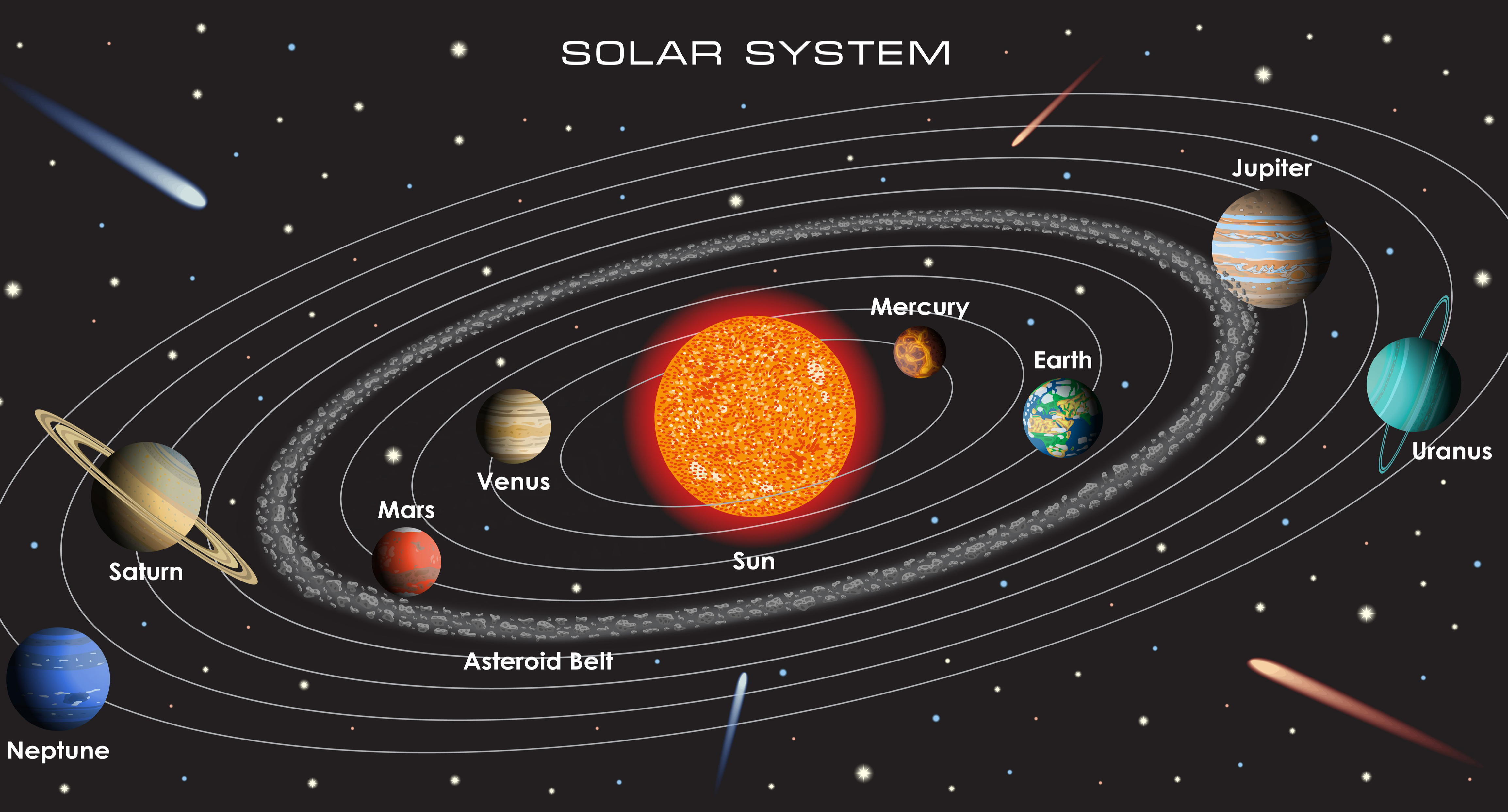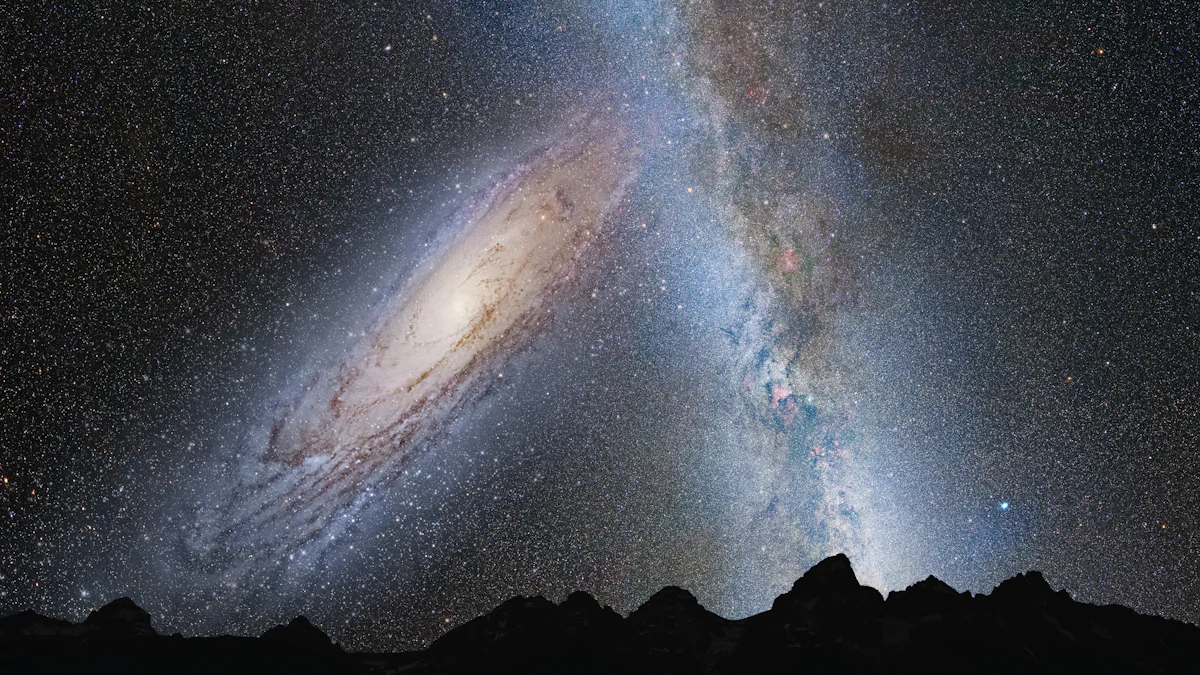Planetarium: Welcome to the Museum

Welcome to the captivating realm of the planetarium! Picture a venue where you can delve into the marvels of the universe without ever leaving your chair. A planetarium provides an exhilarating mix of education and entertainment, allowing you to discover planets, stars, and galaxies in an engaging manner. These immersive experiences are highly favored by visitors, with 99% recommending them to others. Whether you're an aspiring astronomer or simply inquisitive, a planetarium beckons you on a voyage through space. So, are you prepared to embark on this cosmic adventure?
Exploring Our Solar System
The Sun: Our Star

The Sun plays a crucial role in our Solar System. This massive star provides light and warmth to Earth. Without the Sun, life would not exist. The Sun's energy drives weather patterns and supports plant growth. Solar phenomena like solar flares and sunspots add excitement to this celestial body. These events influence Earth's magnetic fields and can even disrupt communication systems.
The Planets: Neighbors in Space
The planets in our Solar System offer a fascinating variety. Inner planets like Mercury, Venus, Earth, and Mars are small and rocky. These planets have solid surfaces and unique features. Mercury has extreme temperatures, while Venus boasts thick clouds. Earth supports life, and Mars intrigues scientists with signs of ancient water.
Outer planets include Jupiter, Saturn, Uranus, and Neptune. These giants consist mainly of gas and ice. Jupiter's Great Red Spot is a massive storm, and Saturn's rings captivate observers. Uranus spins on its side, and Neptune's winds are the fastest in the Solar System. Each planet holds secrets waiting to be uncovered.
Moons and Other Celestial Bodies
Moons orbit many planets, adding diversity to the Solar System. Earth's Moon affects tides and inspires exploration. Jupiter's moon Ganymede is the largest, while Europa may harbor an ocean beneath its icy surface. Saturn's Titan has lakes of methane, offering a glimpse into otherworldly environments.
Asteroids and comets also populate our cosmic neighborhood. Asteroids are rocky remnants from the early Solar System. Comets, with their icy cores, create spectacular tails when near the Sun. These celestial bodies provide clues about planetary origins and evolution.
Beyond the Solar System: Stars and Galaxies

Venturing beyond our solar system opens up a universe filled with stars and galaxies. You might wonder how stars come into existence or what types of stars exist out there. Let's dive into these cosmic wonders.
Understanding Stars
Life cycle of stars
Stars have fascinating life cycles. A star begins as a cloud of gas and dust, known as a nebula. Gravity pulls this material together to form a protostar. As the core heats up, nuclear fusion ignites, and a star is born. Stars spend most of their lives in the main sequence phase, where they burn hydrogen into helium. Eventually, stars exhaust their fuel and enter the red giant phase. The fate of a star depends on its mass. Massive stars explode as supernovae, leaving behind neutron stars or black holes. Smaller stars shed outer layers, forming planetary nebulae, with white dwarfs at their cores.
Types of stars
Stars come in various types. You have red dwarfs, which are small and cool. These stars burn fuel slowly and can live for billions of years. Blue giants, on the other hand, are massive and hot. These stars have short lifespans but shine brightly. Our Sun is a yellow dwarf, providing warmth and light to the planets in our solar system. Each type of star has unique characteristics that contribute to the cosmic tapestry.
The Milky Way and Other Galaxies
Structure of the Milky Way
The Milky Way is our home galaxy. It has a spiral structure with a central bulge surrounded by spiral arms. These arms contain stars, gas, and dust. Astronomers study the Milky Way to understand its formation and evolution. Observations reveal that the Milky Way has absorbed smaller galaxies over time. This process adds to the complexity of its structure. The study of star populations helps trace the history of these mergers.
Types of galaxies
Galaxies come in different shapes and sizes. Spiral galaxies, like the Milky Way, have distinct arms. Elliptical galaxies are more rounded and lack defined structures. Irregular galaxies have no specific shape. Each galaxy type offers clues about its formation and evolution. Astronomers compare galaxies across the cosmos to uncover their secrets. The diversity of galaxies forms the cosmic jewelry that defines the universe's structure.
Exploring beyond our solar system reveals the vastness of space. Stars and galaxies hold mysteries waiting to be unraveled. The journey through the cosmos continues, with each discovery bringing us closer to understanding the universe.
The Universe: The Final Frontier
The universe is vast and full of mysteries. Let's dive into some of the most intriguing aspects.
The Expanding Universe
Big Bang theory
The Big Bang theory explains the universe's beginning. Scientists believe everything started from a single point. This explosion set everything in motion. Galaxies and planets formed as the universe expanded. The universe keeps growing, and this expansion continues today. Observing distant galaxies helps scientists understand this process.
Dark matter and dark energy
Dark matter and dark energy are essential parts of the universe. Dark matter makes up a large portion of the universe's mass. It helps form galaxies and holds them together. Without dark matter, galaxies would not exist as they do. Dark energy, on the other hand, drives the universe's expansion. Understanding these forces provides insight into the universe's past and future.
The Search for Extraterrestrial Life
Exoplanets
Exoplanets are planets outside our solar system. Scientists study these planets to find signs of life. Some exoplanets have conditions similar to Earth. These planets might support life. Discovering more about exoplanets helps us learn about planetary systems. This research offers clues about life's existence elsewhere.
SETI and other initiatives
SETI stands for the Search for Extraterrestrial Intelligence. Scientists use radio telescopes to listen for signals from other civilizations. These efforts aim to find intelligent life beyond Earth. Other initiatives explore planets and moons in our solar system. Missions to Mars and Europa search for signs of life. These projects inspire curiosity and hope for future discoveries.
Exploring the universe reveals its wonders and challenges. The mysteries of dark matter, dark energy, and exoplanets captivate scientists and enthusiasts alike. The quest for knowledge continues, inviting you to join the adventure.
Insights from Experts
Astrophysicists' Perspectives
Importance of Space Exploration
Space exploration fascinates everyone. Astrophysicists believe that exploring the cosmos enhances life. The mysteries of planets and stars lure curious minds. A sense of the unknown drives human curiosity. People want to know what's over the next hill or around the next corner. This curiosity has existed for thousands of years.
Space programs bring a sense of accomplishment. The terrors and joys of exploration inspire many. Astrophysicists see risk as part of spaceflight. Accepting risks leads to greater goals in exploration. Discovering more about planets and the universe enriches life.
"A sense of the unknown has always lured mankind and the greatest of the unknowns of today is outer space. The terrors, the joys and the sense of accomplishment are epitomized in the space program."
Space travel inspires dreams of living forever. The journey to other planets offers hope and excitement. The quest for knowledge continues to captivate people. Space exploration remains a vital part of human progress.
Future of Astronomy
The future of astronomy holds endless possibilities. Astrophysicists predict new discoveries about planets and galaxies. Advancements in technology will reveal hidden secrets. Telescopes will capture images of distant worlds. These images will help scientists understand planetary systems.
Astronomy will continue to explore exoplanets. Finding planets with conditions similar to Earth excites researchers. The search for extraterrestrial life will drive future missions. Scientists will use radio telescopes to listen for signals. These efforts aim to find intelligent life beyond Earth.
Astrophysicists believe that space exploration enhances life. The wonders of the universe inspire future generations. The quest for knowledge invites everyone to join the adventure.
Space exploration holds immense value. Discovering new planets and celestial wonders enriches our understanding of the universe. Planetariums play a vital role in sparking curiosity. These venues inspire future generations to explore planets and stars.
Imagine a child gazing at the night sky, dreaming of distant planets. A planetarium visit can turn that dream into a lifelong passion. The journey through space invites everyone to learn more about planets and galaxies. Embrace the adventure. Explore the cosmos and uncover the mysteries of planets and beyond.
See Also
Inside the Museum: An Exploration of Anatomicum
Unprecedented View: History Like Never Before
Exploring Masterpieces: Unveiling Great Maps of the World

